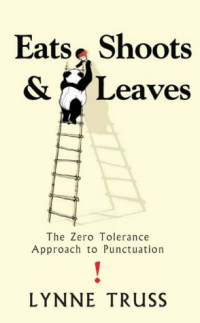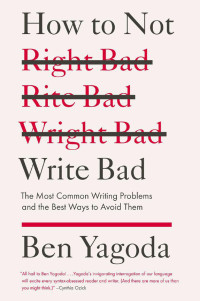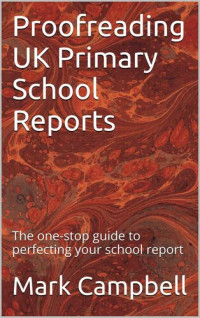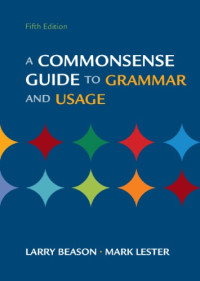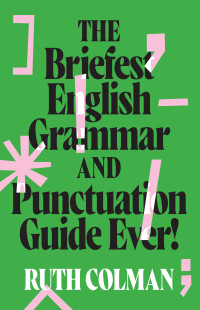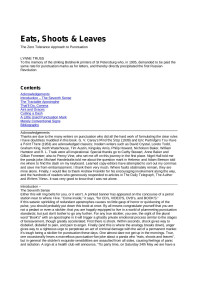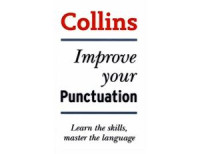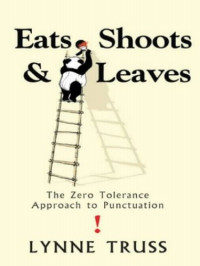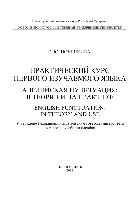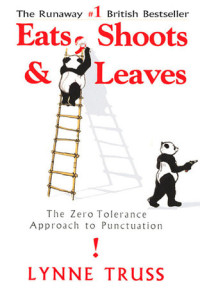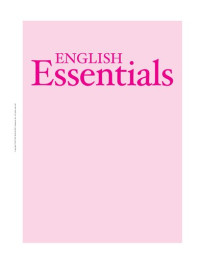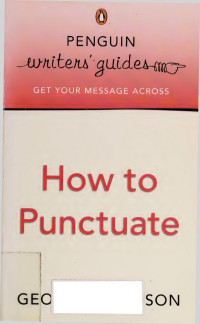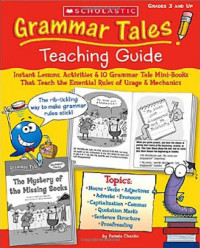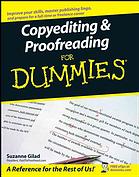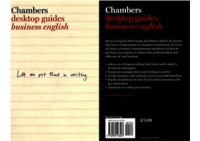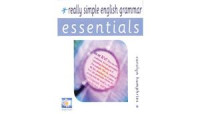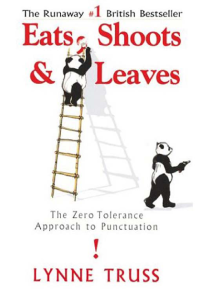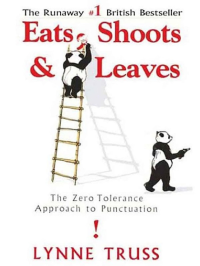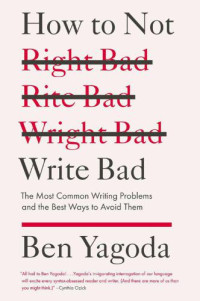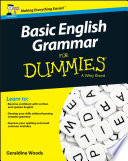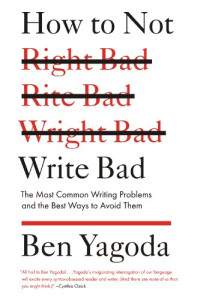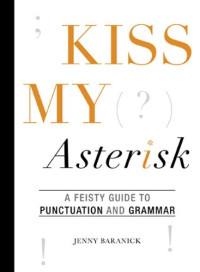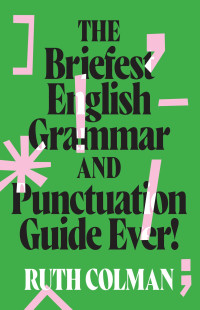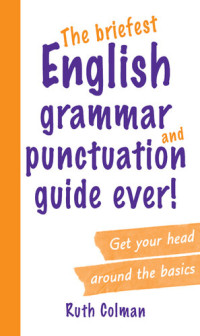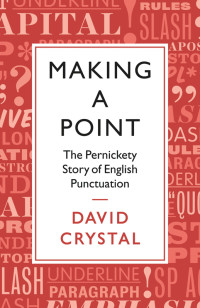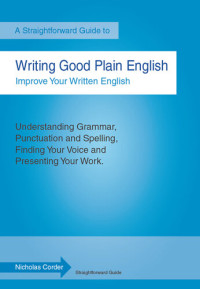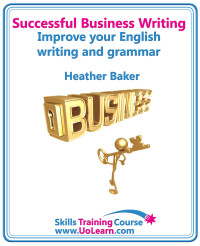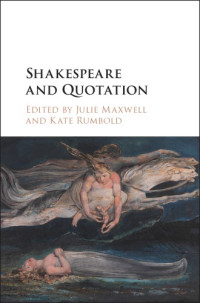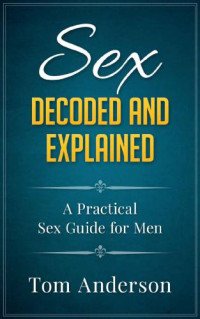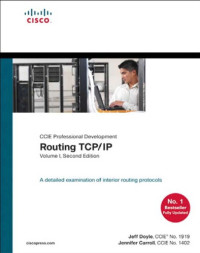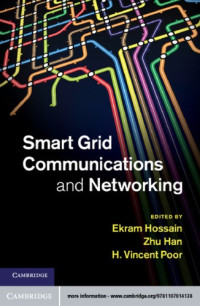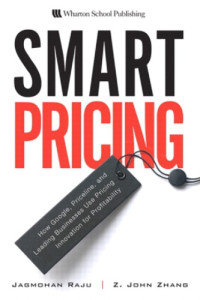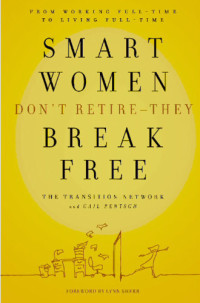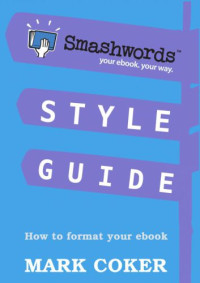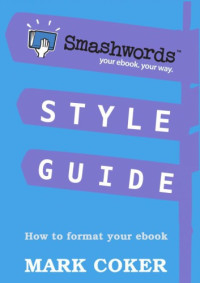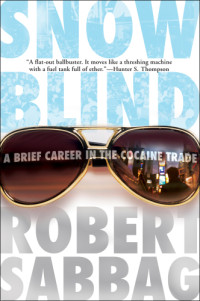
Proofreading UK Primary School Reports: The one-stop guide to perfecting your school report
Campbell, Mark
Contents note continued: Arguing to Change People's Thinking -- Arguing to Enlist People's Support -- Presenting a Proposal -- Case Study: Reading and Responding to an Argument for a Change in Thinking -- "On Reading Trash" / Bob Swift -- "Credit Cards: Leave Home Without Them" / Julia Schoonover -- Case Study: Reading and Responding to an Argument Seeking Active Support -- "Standards You Meet and Don't Duck" / William Raspberry -- "Save Liberal Arts" / Suzanne Gilbertson -- Case Study: Reading and Responding to a Proposal -- "Let Teenagers Try Adulthood" / Leon Botstein -- "Community Service Serves Everyone" / Kerry Donahue -- A Checklist for Persuasion -- Applications -- ch. 19 Special Issues In Persuasion -- Appealing to Reason -- Using Induction -- Using Deduction -- Recognizing Invalid or Deceptive Reasoning -- Fallacies That Break the Chain of Logic -- Fallacies That Evade the Issue -- Considering the Ethical Dimension -- A Checklist for Ethics in Persuasive Writing.;Contents note continued: Case Study: A Second Writer's Response to Reading -- "I Need an Assistant" / David Galuski -- Suggestions for Reading and Responding -- Guidelines for Reading to Respond -- Applications -- ch. 10 Description: Writing To Help Others See -- The Language of Description -- Using Objective Description to Inform -- Using Subjective Description to Make a Point -- Using Description Beyond the Writing Classroom -- Guidelines for Description -- Description as a Primary Essay Strategy -- "Swing Shift" / Glenn Silverberg -- Case Study: Reading and Responding -- "Coming into the Country" / Gish Jen -- "A Special Place" / Ellen Cayer -- A Checklist for Description -- Applications -- ch. 11 Narration: Writing To Help Others Share An Experience -- Using Objective Narration to Explain -- Using Subjective Narration to Make a Point -- Guidelines for Narration -- Using Narrative Reports Beyond the Writing Classroom -- Narration as a Primary Essay Strategy.;Contents note continued: Guidelines for Preparing an Abstract -- Documentation: The Key to Avoiding Plagiarism -- Why You Should Document -- What You Should Document -- How You Should Document -- MLA Documentation Style -- MLA Parenthetical References -- MLA Works Cited Entries -- MLA Sample Works Cited Pages -- APA Documentation Style -- APA Parenthetical References -- APA Reference List Entries -- APA Sample List of References -- Respecting Copyright -- The Doctrine of Fair Use -- Using Materials in Electronic Form -- Digital Tip: Take Notes and Keep Track of Sources on Your Computer -- Applications -- ch. 24 Composing The Research Report, With A Sample Report In Apa Style -- Developing a Working Thesis and Outline -- Drafting Your Report -- Revising Your Report -- Digital Tip: Plan, Draft, and Revise a Research Report on Your Computer -- A Checklist for a Research Report -- A Sample Report in APA Style -- "Campus Crime: A Hidden Issue" / Julia Schoonover.;Contents note continued: Guidelines for Analyzing Your Audience -- Case Study: Analyzing Your Writing Situation -- Discovering, Selecting, and Organizing Your Material -- Discover Useful Material -- Guidelines for Brainstorming -- Select Your Best Material -- Organize for Readers -- Guidelines for Selecting and Organizing Your Material -- Case Study: Exploring and Arranging Assets -- Digital Tip: Use Digital Tools to Help You Plan -- Finding Your Voice -- Find a Voice That Connects with Readers -- Avoid an Overly Informal Tone -- The Writer's Planning Guide -- Planning for Group Work -- Guidelines for Writing Collaboratively -- Digital Tip: Use Your Computer to Collaborate on Group Projects -- A Checklist for Planning -- Applications -- ch. 3 Decisions In Drafting -- Drafting the Title and Introduction -- The Title -- The Introductory Paragraph -- Placing the Thesis -- Selecting an Opening Strategy -- Drafting the Body -- Drafting the Conclusion -- Selecting a Closing Strategy.;Contents note continued: Guidelines for Achieving a Conversational Tone -- Express a Clear and Appropriate Attitude -- Avoid Personal Bias -- Invite Everyone In -- Avoid Sexist Usage -- Guidelines for Nonsexist Usage -- Avoid Offensive Usage of All Types -- Guidelines for Inoffensive Usage -- Consider the Cultural Context -- Digital Tip: Use Your Word Processor to Revise Words and Phrases -- A Checklist for Word Choice and Tone -- Legal and Ethical Implications of Word Choice -- Applications -- SECTION THREE Essays for Various Goals -- Introduction -- Three Major Goals of Writing -- Major Development Strategies -- Using This Section -- A Word About Structural Variations -- ch. 9 Reading And Responding To Writing -- Different Levels of Reading -- Different Readers, Different Meanings -- Reading Strategies for Writers -- Case Study: One Writer's Response to Reading -- "Why I Want a Wife" / Judy Brady -- "A Long Way to Go" / Jacqueline LeBlanc.;Contents note continued: ch. 25 Case Study: A Sample Research Project In Mia Style -- Discovering a Worthwhile Topic -- Focusing the Inquiry -- Searching the Literature -- Recording and Reviewing Findings -- Settling on a Thesis -- Writing and Documenting the Report in MLA Style -- "Students Under Stress: College Can Make You Sick" / Shirley Haley -- SECTION FIVE Special Issues in Writing -- ch. 26 Writing At Work -- Writing in Your Career -- Characteristics of Workplace Writing -- Reader-Focused Writing -- Efficient Writing -- Ethical Writing -- Professional Writing -- Resumes and Other Job-Search Materials -- Resumes -- Guidelines for Hard-Copy Resumes -- Guidelines for Emailed and Scannable Resumes -- Guidelines for Online Resumes -- Application Letters -- Guidelines for Application Letters -- Dossiers, Portfolios, and Webfolios -- Dossiers -- Portfolios and Webfolios -- Guidelines for Dossiers, Portfolios, and Webfolios.;Contents note continued: ch. 6 Revising The Paragraphs: Shaping For Readers' Access -- The Topic Statement -- The Topic Statement as Readers' Framework -- The Topic Statement as Writers' Framework -- How Audience and Purpose Determine a Topic Statement's Focus -- Paragraph Unity -- Paragraph Coherence -- Ordering Ideas for Coherence -- Using Parallelism for Coherence -- Using Repetition and Restatement for Coherence -- Using Pronouns for Coherence -- Using Consistent Tense, Point of View, and Number for Coherence -- Using Transitions for Coherence -- Guidelines for Shaping Your Support Paragraphs -- Digital Tip: Use Your Word Processor to Revise an Essay's Supporting Paragraphs -- A Checklist for Support Paragraphs -- Applications -- ch. 7 Revising The Sentences: Writing With Style -- Aim for Clarity -- Keep Your Pronoun References Clear -- Avoid Ambiguous Modifiers -- Avoid Overstuffed Sentences -- Keep Equal Items Parallel -- Arrange Word Order for Coherence and Emphasis.;This writing guide/reader/handbook demystifies writing by presenting the writing process as a series of critical thinking decisions about audience and purpose. Widely admired for its clear, readable style, The Writing Process focuses on writing as decision-making, with a wealth of student samples in various draft stages and a strong selection of professional readings to illustrate writing strategies.;Contents note continued: Everyday Workplace Correspondence: Memos, Emails, Instant Messages, Text Messages, Blogs, and Wikis -- Memos -- Emails -- Guidelines for Memos -- Guidelines for Emails -- Instant Messages and Text Messages -- Blogs and Wikis -- Letters -- Parts of a Letter -- Letter Format -- Types of Letters -- Guidelines for Letters -- A Final Word About Writing at Work -- Applications -- ch. 27 Taking Short-Answer, Paragraph, And Essay Exams -- Before You Write -- Managing Your Time -- Reading the Questions and Settling on a Strategy -- Writing Your Responses -- Short Answers -- Paragraph-Length Responses -- Essay-Length Responses -- Guidelines for Taking Short-Answer, Paragraph, and Essay Exams -- Applications -- SECTION SIX A Brief Handbook -- Common Sentence Errors -- Sentence Fragment -- Acceptable Fragments -- Faulty Coordination -- Faulty Subordination -- Comma Splice -- Run-on Sentence -- Faulty Agreement---Subject and Verb.;Contents note continued: Using Connotative Definitions to Make a Point -- Choosing the Level of Detail in a Definition -- Parenthetical Definition -- Sentence Definition -- Expanded Definition -- Guidelines for Definition -- Using Definition Beyond the Writing Classroom -- Definition as a Primary Essay Strategy -- "The Meaning of Macho" Rose del Castillo Guilbault -- Case Study: Reading and Responding -- "For My Indian Daughter" / Lewis P. Johnson -- "Life in Full Color" / Shirley Haley -- A Checklist for Definition -- Applications -- ch. 18 Argument: Writing To Persuade Your Readers -- Anticipating Audience Resistance -- Having a Debatable Claim -- Supporting Your Claim -- Offer Convincing Reasons -- Provide Objective Evidence -- Appeal to Shared Goals and Values -- Shaping a Clear Line of Thought -- Connecting with Your Audience -- Guidelines for Persuasion -- Using Argument Beyond the Writing Classroom -- Various Arguments for Various Goals.;Contents note continued: Digital Tip: Use Search Engines and Subject Directories Strategically -- Digital Tip: Use Information from Blogs, Wikis, and Internet Forums Cautiously -- Traditional Secondary Sources -- Exploring Primary Sources -- Unsolicited Inquiries -- Informational Interviews -- Guidelines for Informational Interviews -- Surveys -- Guidelines for Developing a Survey Questionnaire -- Personal Observation -- Applications -- ch. 22 Evaluating And Interpreting Your Findings -- Evaluate the Sources -- Determine the Currency of the Source -- Assess the Reputation of the Source -- Consider the Motives of the Study's Financers -- Cross-Check the Source Against Other, Similar Sources -- Digital Tip: Evaluate Web-based Sources Effectively -- Evaluate the Evidence -- Determine the Sufficiency of the Evidence -- Differentiate Hard from Soft Evidence -- Decide Whether the Presentation of Evidence Is Balanced and Reasonable -- Consider How the Facts Are Being Framed.;Contents note continued: Guidelines for Drafting the Essay -- Case Study: Drafting the Essay -- "Cars R Us" / Maureen Malloy -- Digital Tip: Use Your Computer to Draft Safely and Efficiently -- A Checklist for Drafting -- Applications -- ch. 4 Decisions In Revising -- The Meaning of Revision -- A Checklist for Revision -- Case Study: Revising the Draft -- Revising with Peers -- Guidelines for Peer Review and Editing -- Proofreading Your Final Draft -- Guidelines for Proofreading -- Digital Tip: Use Your Computer to Revise -- A Checklist for Proofreading -- Applications -- SECTION TWO Specific Revision Strategies -- Introduction -- ch. 5 Revising The Content: Writing Something Worthwhile -- Make It Credible -- Make It Informative -- "Walk but Don't Run" / Jeff Leonard -- Make It Complete -- Avoid Plagiarism -- Guidelines for Revising Your Content -- Digital Tip: Use Your Word Processor to Revise an Essay's Content -- A Checklist for Content -- Applications.;Contents note continued: A Checklist for Causal Analysis -- Applications -- ch. 16 Comparison And Contrast: Writing To Explain Similarities And Differences -- Developing a Comparison -- Developing a Contrast -- Developing a Combined Comparison and Contrast -- Using Comparison and Contrast to Explain -- Using Comparison and Contrast to Make a Point -- A Special Kind of Comparison: Analogy -- Using Comparison and Contrast Beyond the Writing Classroom -- Guidelines for Comparison and Contrast -- Comparison and Contrast as a Primary Essay Strategy -- "Debunking Myths About Latinos" / Ruben Navarrette Jr. -- Case Study: Reading and Responding -- "Social Networking: Crossing Digital Divide Can Pay Dividends" / Reid Goldsborough -- "Is Online Education Taking Us Anywhere?" / John Manning -- A Checklist for Comparison and Contrast -- Applications -- ch. 17 Definition: Writing To Explain The Exact Meaning -- Using Denotative Definitions to Explain.;Contents note continued: Using Division and Classification Beyond the Writing Classroom -- Division and Classification as Primary Essay Strategies -- "All Junk, All the Time" / Richard Brookhiser -- Case Study: Reading and Responding -- "Doubts About Doublespeak" / William Lutz -- "We Like It Here" / Patrice LaChane -- A Checklist for Division and Classification -- Applications -- ch. 14 Process Analysis: Writing To Explain Steps And Stages -- Using Process Analysis to Explain -- Explaining How to Do Something -- Explaining How Something Happens -- Guidelines for Giving Instructions -- Using Process Analysis to Make a Point -- Guidelines for Explaining How Something Happens -- Using Process Analysis Beyond the Writing Classroom -- Process Analysis as a Primary Essay Strategy -- "Dumpster Diving" / Lars Eighner -- Case Study: Reading and Responding to Instructions -- "How to Deal with Snakebites" / Frank White -- "A First-Week Survival Guide for Commuters" / Catherine Nichols.;Contents note continued: "Black Men and Public Space" / Brent Staples -- Case Study: Reading and Responding -- "Back at the Ranch" / Jay Allison -- "The Old Guy" / Al Andrade -- A Checklist for Narration -- Applications -- ch. 12 Illustration: Writing To Provide Examples -- Using Examples to Explain -- Using Examples to Make a Point -- Guidelines for Illustrating with Examples -- Using Illustration Beyond the Writing Classroom -- Illustration as a Primary Essay Strategy -- "A Case of `Severe Bias'" / Patricia Raybon -- Case Study: Reading and Responding -- "All You Can Eat" / Michelle Stacey -- "Fallen Arches" / Sophia Rothberg -- A Checklist for Using Illustration -- Applications -- ch. 13 Division And Classification: Writing To Explain Parts And Categories -- Using Division to Explain -- Using Division to Make a Point -- Guidelines for Division -- Using Classification to Explain -- Using Classification to Make a Point -- Guidelines for Classification.;Contents note continued: Interpret Your Findings -- Identify Your Level of Certainty -- Examine the Underlying Assumptions -- Be Alert for Personal Bias -- Consider Other Possible Interpretations -- Avoid Errors in Reasoning -- Faulty Generalization -- Faulty Causal Reasoning -- Faulty Statistical Reasoning -- Guidelines for Evaluating and Interpreting Information -- Assess Your Inquiry -- A Checklist for the Research Process -- Applications -- ch. 23 Avoiding Plagiarism, Documenting Your Sources, And Respecting Copyright -- What Is Plagiarism? -- Identifying Sources and Information That Must Be Credited -- Taking Effective and Accurate Notes -- Guidelines for Taking Notes -- Quoting, Paraphrasing, and Summarizing -- Quoting the Work of Others -- Guidelines for Quoting the Work of Others -- Paraphrasing the Work of Others -- Guidelines for Paraphrasing the Work of Others -- Summarizing the Work of Others -- Guidelines for Summarizing Information -- Preparing an Abstract.;Contents note: SECTION ONE. The process -- decisions in planning, drafting, and revising: Introduction -- How writing looks -- How writing makes a difference -- How digital tools have transformed writing (and how they have not) -- ch. 1 Decisions in the writing process -- Decision making and the writing process -- Case study: One writer's decision-making process -- "Confessions of a food addict" Wendy Gianacoples (student) -- The looping structure of the writing process -- Decisions on collaborative writing -- Digital tip: know when digital tools can help and when they cannot -- Applications -- "Breaking the bonds of hate" Virak Khiev (student) -- ch. 2 Decisions planning -- Deciding on a topic, purpose, thesis, and audience -- Decide on your topic -- Guidelines for choosing your essay topic -- Decide on your purpose -- Guidelines for deciding on your purpose -- Decide on your thesis -- Guidelines for developing your thesis -- Decide on your audience.;Contents note continued: Use Active Voice Whenever Possible -- Use Passive Voice Selectively -- Trim the Fat -- Avoid Wordy Phrases -- Eliminate Redundancy -- Avoid Needless Repetition -- Avoid There and It Sentence Openers -- Delete Needless Phrases -- Avoid Weak Verbs -- Avoid Excessive Prepositions -- Avoid Nominalizations -- Make Negatives Positive -- Clear Out Clutter Words -- Delete Needless Prefaces -- Delete Needless Qualifiers -- Help Sentences Flow -- Combine Related Ideas -- Vary Sentence Construction and Length -- Use Short Sentences for Special Emphasis -- Digital Tip: Use Your Word Processor to Revise Sentences -- A Checklist for Sentence Style -- Applications -- ch. 8 Revising The Words And Phrases: Fine-Tuning -- Say Something Genuine -- Avoid Triteness -- Avoid Overstatement -- Avoid Misleading Euphemisms -- Aim for Precision -- Sharpen the Visual Details -- Add Personality -- Establish an Appropriate Distance -- Guidelines for Deciding About Tone.;Contents note continued: Faulty Agreement---Pronoun and Referent -- Faulty Modification -- Faulty Pronoun Case -- Sentence Shifts -- Effective Punctuation -- End Punctuation -- Semicolon -- Colon -- Comma -- Apostrophe -- Quotation Marks -- Ellipses -- Italics -- Parentheses -- Brackets -- Dashes -- Effective Mechanics -- Abbreviation -- Hyphenation -- Capitalization -- Use of Numbers -- Spelling -- Applications -- APPENDIX: FORMAT GUIDELINES FOR SUBMITTING YOUR MANUSCRIPT -- Format Guidelines for Submitting Your Manuscript -- A Checklist for Formatting.;Contents note continued: Appealing to Emotion -- Showing Empathy -- Guidelines for Making Emotional Appeals -- Acknowledging Opposing Views -- Maintaining a Moderate Tone -- Using Satire in Appropriate Circumstances -- Adding Humor Where Appropriate -- A Checklist for Persuasive Appeals -- Applications -- SECTION FOUR The Research Process -- Introduction -- ch. 20 Thinking Critically About The Research Process -- Asking the Right Questions -- Exploring a Balance of Views -- Achieving Adequate Depth in Your Search -- Evaluating Your Findings -- Guidelines for Evaluating Expert Information -- Interpreting Your Findings -- Digital Tip: Balance Web-based and Traditional Research -- Applications -- ch. 21 Asking Questions And Finding Answers -- Deciding on a Research Topic -- Guidelines for Choosing a Research Topic -- Primary Versus Secondary Sources -- Exploring Secondary Sources -- Web-based Secondary Sources.;Contents note continued: A Checklist for Giving Instructions -- Case Study: Reading and Responding to a Process Explanation -- "How Barrier Beaches Survive and Renew Themselves" / Jane Lowe -- "How Acid Rain Develops, Spreads, and Destroys" / Bill Kelly -- A Checklist for Process Explanation -- Applications -- ch. 15 Causal Analysis: Writing To Explain Why Something Happened Or What Will Happen -- Using Causal Analysis to Explain: Definite Causes -- Using Causal Analysis to Make a Point: Possible or Probable Causes -- Reasoning from Effect to Cause -- Guidelines for Effect-to-Cause Analysis -- Reasoning from Cause to Effect -- Guidelines for Cause-to-Effect Analysis -- Using Causal Analysis Beyond the Writing Classroom -- Causal Analysis as a Primary Essay Strategy -- "Should Schools Try to Boost Self-Esteem" / Roy F. Baumeister -- Case Study: Reading and Responding -- "Clothes Woes" / David Updike -- "School Uniforms: A Recipe for School Reform" / John Saurette.
Année:
2014
Langue:
english
Pages:
19
Fichier:
EPUB, 136 KB
IPFS:
,
english, 2014
 Amazon
Amazon  Barnes & Noble
Barnes & Noble  Bookshop.org
Bookshop.org  Convertissez des fichiers
Convertissez des fichiers Plus de résultats de recherche
Plus de résultats de recherche Autres avantages
Autres avantages 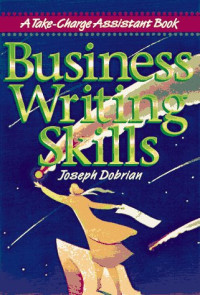
![Hicham & Mohamed Ibnalkadi [Hicham & Ibnalkadi, Mohamed] — The Art of Writing Well (The Complete MBA CourseWork Series)](https://s3proxy.cdn-zlib.se/covers200/collections/userbooks/62fa169cf1790a3b756b9291ec461a42c956023e63028724e0e8f4272473eff8.jpg)
